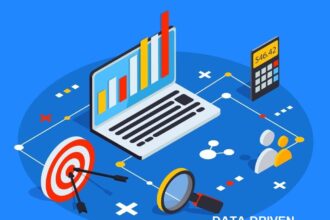If you’re in the business of helping others, then you need to be in the business of data. In the world of data stacking, which is the theory of data organizing, there are two concepts that center around it:
Fact table vs dimension table.
This is the topic of harnessing data in a manner that is accessible, and tangible has been posited by many. Entire professions and teams have been built around data analytics and interpretations, an obstacle that has left all but those with enough capital and resources out of reach. This makes it hard for some companies to take advantage of things like data virtualization.
Luckily, newer developments in technology are helping to change that discourse. Not only is this new technology making data accessible to those outside of tech, it’s also streamlining consolidation of multiple data sources. So, whether you’ve been using Excel, SQL, CRMs, or other platforms to keep track of your data, this new technology will make accessing and configuring your data simpler.
In the realm of dimensional data modeling, or the hierarchical organization of numerical and contextual values, discourse revolves around the nature and functions of a fact table vs dimension table.
What are Fact Tables vs Dimension Tables?
Think of a fact table as a group of data that stores numerical values or figures. For example, you could say that an organization, let’s call it Company A, had 10 sales of their product in any given month. That’s great, you may say. But alone, the numerical values may not offer much information. What’s missing is the context or meaning that gives that digit real, tangible value. This is what dimensional tables offer: the context or meaning behind numerical values.
Here’s a list of contextual value examples a dimensional table may include:
- Products (product category, features, etc.)
- Location (country, states, cities where product was sold)
- Branch (regions, store branches, employees)
- Time (years, months, weeks, days)
Together, fact and dimensional tables take data and provide the valuable insight and outlook companies small and large alike have been keen on harnessing. But let’s back up a moment and first talk about the two most common types of data models or schema, found out there: stars and snowflakes.
What are Star and Snowflake Schemas?
In a star schema, aptly named for its configuration of a star-shape, the fact table is situated in the center. Dimensional tables, each with its own contextual focus (see examples above) branch out from the fact table. When you recall your specific organization or company data, depending on the query, the fact and dimension table provide the results and context you are after. Moreover, the distinguished shape is also a way to conceptualize data stacking in a way that makes sense for the individual company or organization.
Now, a more extended approach to data stacking comes in the form of the snowflake schema. If you think of the shape of a snowflake, you can imagine a central point from which many lines issue out. This would be the fact table. However, unlike a star schema, these extrusions extend out to include dimension tables of their own. In other words, the contextual values include an added layer of context.
An example of this could be Dimension Table A (focusing on products) and Dimension Table B (focusing on variants of a product) branching out from the first. The configuration of your data stack will depend primarily on the extent of dimensions (or values) in use.
You Don’t Have to be a Tech Expert to Harness Data
Many businesses don’t incorporate data-driven strategies to grow or market their businesses. Oftentimes, getting access to that data is expensive. However, advancements in data stacking technologies are making it easy for small businesses, start-ups, entrepreneurs, nonprofits, or other business types to harness their data.
Peter Fishman, CEO and Co-Founder of Mozart Data, describes his platform as “the easiest way to set up a modern data stack.” He explains that “not every business gets value out of their data . . . but every business can.”
Data analytics can offer advantages and guidance to businesses by freeing up time and resources to focus on product development, customer feedback, fundraising initiatives, research, and long-term growth.









